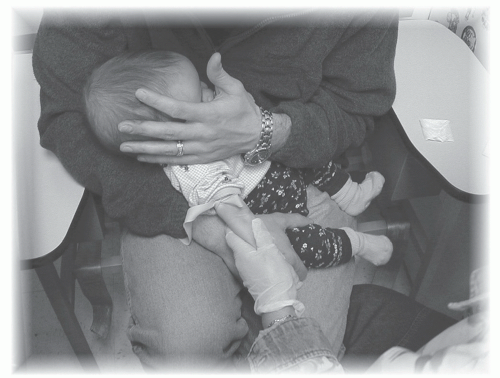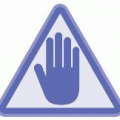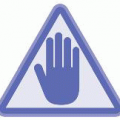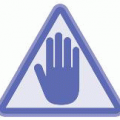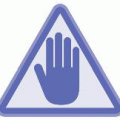Children are not small adults. An area of concern is the child’s emotional needs, which require patience, education, and understanding from infusion nurses. Psychosocial age and ability, as well as each child’s particular
developmental stage, exert major influences on emotional needs. When hospitalized, some children regress and exhibit behaviors more common in a younger age group (e.g., a child who is toilet trained may regress to
the diaper stage). These children resume developmental landmarks once treatment ends or the child’s condition stabilizes. Thus, even though children of varied ages and intellectual capacities receive similar infusion therapies, they require education before, during, and after infusion therapy that considers their particular emotional and developmental variables.
Developmental Stages
A full understanding of each developmental stage enables the health care team to provide individualized care that focuses on each child’s physical functioning and emotional coping skills. This level of care is appropriate and nonthreatening. It enhances the ability of staff to recognize that a child’s needs vary markedly, according to stress levels as well as by growth and developmental levels.
A significant difference between children and adults is in the preparation for the procedure. A developmentally tailored approach is essential when working with children.
Table 21-1 reviews growth, development, and useful approaches when working with children of different developmental stages.
This chapter cannot cover all the principles and theories of growth and development. Instead, important principles are highlighted. Erikson is credited with the development of
the most widely accepted theory of personality development (
Erikson, 1963). Each stage has two components, the desirable and undesirable aspect (
Table 21-2). There are five stages that relate to childhood: trust versus mistrust, autonomy versus shame and doubt, initiative versus guilt, industry versus inferiority, and identity versus role confusion. Successful completion of each stage is ideal. Hospitalization can cause children to regress to an earlier stage. Parents need to know that this is a normal response.
THE NEWBORN AND INFANT
The newborn stage is from birth to 28 days, while the infant stage is from 29 days to 12 months. For the purpose of this review, the neonate and premature infant will be included in the infant stage. Unique considerations will be delineated when necessary. Neonates, and in particular low birth weight and premature infants, have a low tolerance for physiologic stress, including changes in environmental temperature, bright lights, and loud noises. When performing a procedure, it is important to keep those factors in mind. Temperature regulation becomes more efficient as the infant matures.
While a pacifier is useful to comfort an infant, it is essential to be mindful of the infant’s breathing and assure that the nares remain patent. In some cases, it may be necessary to stop a procedure to suction the infant and ensure that the infant is able to breathe comfortably and effectively. Lengthy procedures may also require that the procedure be halted; allowing the infant to recover from physiological stress.
The psychosocial need of the infant is to begin to develop trust. The infant learns trust when his or her primary needs are met. Along with the basic need of nourishment, the infant needs to feel secure. Caregivers can help the infants feel secure by quickly responding to their cries, talking to them in a soft, soothing voice, keeping them warm and dry, and provide comfort during holding whenever possible.
Communication with the infant depends on his or her developmental age. Younger infants usually respond best to a soft soothing voice prior to and during procedures. As the infant grows, developing trust may mean playing a game of “peek-a-boo” to begin establishing rapport.
Crib side rails should always remain up unless a caregiver physically has a hand on the infant. By 4 to 5 months of age, infants begin to put things in their mouths; therefore, safe care dictates keeping all small objects out of reach.
In addition, all infants under 1 year of age should be in a safe sleep environment. The components of safe sleep are a firm mattress and no toys or loose blankets in the crib (
Flook & Vincze, 2012). Band-aids or adhesive dressings that could be “chewed off” are considered a choking hazard and should be avoided. By 4 to 8 months, infants may begin to exhibit “stranger anxiety.” Postprocedure, infants should be cuddled and allowed to play.
THE TODDLER
The toddler stage is from 1 to 3 years of age. Toddlers are beginning to use and develop language. Although they have a short attention span, toddlers are able to understand simple directions. The toddler’s psychosocial developmental task is developing autonomy. They should be allowed choices when possible. Pain should be assessed and managed using toddler language (hurt, owie, boo-boo). Toddlers often have a favorite toy, blanket, or sleep friend. Parents should be encouraged to remain with their toddler.
The toddler should be given age-appropriate information just prior to any procedure. Communication should be done by speaking slowly and using short simple explanations. Directions should be given one at a time. It is important to use words the toddler understands to describe what the toddler will see, hear, and smell. Dolls and toys to demonstrate the medical equipment will aid in the toddler’s ability to understand. For example, the toddler can first be shown how the doll will get an IV. Similar to the infant, it is important to keep small objects out of reach and not leave the toddler unsupervised.
THE PRESCHOOLER
The preschool stage is from 3 to 6 years, and at this phase of psychosocial development, the child’s task is to develop initiative. The preschool child should be offered reasonable choices (e.g., site for injection) to help foster independence and a sense of control. They are starting to socialize with groups. They fear being left alone and bodily harm. Preschool-aged children need clear rules and boundaries to develop their sense of security. By this stage, the preschool child has physically improved coordination, balance, and muscular strength.
An infusion therapy-teaching tool with pictures and large-print words in simple language can help preschoolers understand the procedure. Distraction using age-appropriate toys is an effective intervention. These items can include a Slinky, a clear sealed acrylic “magic wand” with floating sparkles, a kaleidoscope, and a bottle of bubbles for blowing. Medical play therapy, consisting of practicing IV therapy on a doll, is an ideal teaching strategy that enhances emotional preparation through acting out.
Similar to the toddler, explanations should be honest using terms of sensation (i.e., feel, hear, see, or smell). Usually, it is best to tell the child that the venipuncture will hurt but only for a short time. Define the term “time” by comparison with other procedures. For example, say, “The actual IV start takes about the same time it takes you to say the alphabet or count to 50.” It is important to assure the child that any procedure is not a punishment. Rewards such as stickers, given for cooperation, are well received.
THE SCHOOL-AGE CHILD
The school-age child (6 to 12 years) is physically maturing at a fast rate, although, emotional and social maturity does not always occur at the same rate. This is the stage of competence; the psychosocial task of the school-age child is developing industry. They are able to take on responsibilities, including home chores and schoolwork. School-agers have
increased attention spans and are eager learners. The school-age child understands cause and effect and logical reasoning. They are able to describe pain and continue to fear bodily harm. The school-ager desires privacy and enjoys a sense of control. Allow children to participate by tearing tape, opening alcohol swabs, or holding tubing. Family is still very important, but they may begin to prefer friends.
Explanations about procedures should be in language the school-ager understands. Written instructions are also an option. The child should be encouraged to ask questions and talk about his or her feelings. School-agers can handle longer teaching sessions and respond well to praise. Rewards are useful in recognizing their achievements. They also need to be reassured that procedures are not punishments. Behavior limits may need reinforcement. Parents need to be included in decisions, but the school-age child should be given opportunities for decision making.
THE 12- TO 18-YEAR-OLDS
The psychosocial task for the 12- to 18-year-olds is the development of identity. The adolescent is struggling to obtain a sense of self. They are preoccupied with their body appearance and the need to fit in with their peers. Separation from their peers can be difficult. They may have wide mood swings, and risk-taking behavior is common. The adolescent may challenge authority but still need adult support. Their rapid growth spurts may cause them to be easily fatigued, and their sleep patterns may change.
The appropriate approach for the adolescent is similar to that of the adult. Procedures should be explained and instructions given in writing. They should be encouraged to ask questions and talk about their feelings. Keep privacy as a priority during procedures and recognize concerns about body image. Decision making and involvement in self-care are essential for the adolescent.
DEVELOPMENT APPROACH FOR ALL AGES
Always be honest with children. Specifically, do not promise a certain number of IV attempts or “only one stick” because a child will lose trust if several attempts turn out to be necessary. Language used is important. Nurses may be able to assuage a child’s fear of needles by telling the child that once the IV is in place, the needle is no longer there and only a small “straw” is in the vein.
Safety is always the primary concern for all hospitalized children. Their hospital bed should remain a safe place (
Hockenberry et al., 2011). Invasive procedures should be performed in a treatment room whenever possible, and parents should be encouraged to stay with their child.
Parents are often permitted around-the-clock visiting hours to stay with their hospitalized children, even in neonatal and pediatric intensive care units. For ill children, this can be comforting and provides an emotional support system.
Frey, Ersch, Bernet, and Baenziger (2009) suggested that parents who stay with their hospitalized children are inevitably involved in safety issues and may help detect critical (harmful or potentially harmful) events precipitated by health care professionals.
During the procedure, parents/caregivers may provide emotional support and represent security during an actual procedure, but they should not be used to restrain a child unless no other assistance is available (i.e., in-home care). Parents/caregivers can be instructed to use positioning for comfort techniques to hold a child still for venipuncture while still helping a child feel secure (
Sparks, Setlik, & Luhman, 2007;
Figure 21-1).
If a parent chooses not to accompany a child into the treatment room for IV insertion, the infusion nurse should honor this decision and not make parents feel guilty. Providing comfort and praise after the IV insertion is an ideal means of parental involvement.
Knowledge of the expected developmental stage is important; however, the health care team must remember to assess each child individually, not just according to age or physiologic maturity. In some cases, children have disease processes, such as renal disease, that can result in growth delays, causing staff to mistake the child’s actual age. When teaching parents and children, it is best to ask, “What questions do you have?” as opposed to asking, “Do you have any questions?” This simple change in wording gives the learner permission to ask questions of the health care team without feeling intimidated. Child and family education is addressed in
Box 21-1.
Pain Assessment and Reduction
Studies indicate that infants and children respond to noxious stimuli and experience pain (
Leahy et al., 2008;
Walco, 2008;
Walden & Gibbins, 2008;
Zempsky, 2008a,
2008b). In one study, pediatric inpatients reported IV line placement as the leading cause of procedure-related pain, on the same level of pain as postsurgical pain (
Cummings, Reid, Finley, McGrath, & Ritchie, 1996). The memory of previous painful events, including venipuncture, can have both psychological and physiological impact on later painful episodes (
Leahy et al., 2008). Evidence suggests that repeated painful procedures may have cumulative effects on the developing brain (
Walden & Gibbins, 2008).
Assessment of pain in children requires the use of different pain scales (
Jacob, 2009). Self-report is the most reliable indicator of pain; however, this is not possible in the preverbal child. Behavioral observations are used in some neonatal and pediatric pain scale tools. The FLACC Pain Assessment Tool is an example of a behavioral tool comprised of an interval scale that measures pain from 0 (no pain behaviors) to 10 (highest pain behaviors). The behaviors observed using the FLACC scale are: Facial expression, Leg movement, Activity, Cry, and Consolability (
Table 21-3).
There are also pain scales that evaluate the neonate using physiologic indicators along with behaviors. The premature infant pain profile (PIPP) scale is used for infants 28 to 40 weeks of gestational age. The variables assessed are gestational age, eye squeeze, behavioral state, nasolabial furrow, heart rate, oxygen saturation, and brow bulge (
Jacob, 2009) (
Table 21-4).
Everyone who starts IVs in children should be knowledgeable in techniques to maximize comfort and minimize pain. An easy acronym to remember these techniques is
BSPECLD (
Table 21-5). Buffered lidocaine can be administered intradermally or with needleless injection. This can be very effective in reducing the pain from a needlestick.
Sucrose has been very effective in reducing pain response in infants during invasive procedures. The sucrose is administered orally or via a syringe at least 2 minutes prior to the procedure, preferably with a pacifier since nonnutritive sucking has been shown to be a nonpharmacological pain-relieving method (
Cohen, 2008).
Pain Ease is a vapocoolant (topical skin refrigerant) with rapid onset (
Farion, Splinter, Newhook, Gaboury, & Splinter, 2008). Spray continuously for 4 to 7 seconds from a distance of 3 to 7 inches, or a cotton ball can be saturated and held over the site for 4 to 7 seconds. Avoid using vapocoolant on patients with poor circulation, on children < 4 years old, or on broken skin.
Frequently, topical anesthetic creams are a choice in the pediatric population. EMLA is a topical anesthetic made of lidocaine 2.5% and prilocaine 2.5%. It requires a minimum of 60 minutes to provide effective pain relief. Liposomal lidocaine LMX4 is another topical anesthetic cream containing 4% lidocaine. The onset of action is quicker than that of EMLA
(30 minutes). Both creams may be associated with the development of
methemoglobinemia in susceptible children, particularly in young infants (
Zempsky, 2008a,
2008b).
Table 21-6 provides a summary of some medications for pain reduction.
Distraction can be one of the greatest skills to develop for use in pediatric care for nonpharmacologic pain control (
Cohen, 2008). Have the child blow bubbles or take a deep
breath when you puncture the vein to “blow the hurt away.” Counting and singing are other good distractors for a preschool or school-age child. Tell them to sing or count louder if they have any pain. For the older child, distraction may include asking about school, teachers, pets, and favorite places.
Guided imagery can also be helpful to reduce the anxiety and pain associated with IV insertion. Guided imagery encourages children to employ pleasant imagery as a distraction to pain. The child is encouraged to describe the details of the pleasant experience using different senses (e.g., see, hear, and feel). Instruct the child to concentrate on the pleasurable event. Guided imagery when combined with other nonpharmacologic techniques such as relaxation and deep breathing can be an effective approach to pain reduction (
Phipps et al., 2010). Other techniques include rocking/holding, reduced light, swaddling/nesting, touch/massage, and positioning for comfort.
Nurses can become proficient in the use of nonpharmacological pain techniques or they may seek assistance from a certified child life specialist, a professional who has studied child development and the reactions of children to health care settings (
Leahy et al., 2008). The child life specialist is available to help the child’s fear and anxiety by helping them understand and cope with the hospital stay through preparation, support, and play.
A combination of age-appropriate pharmacological and nonpharmacological pain techniques used with children prior to IV insertion helps to maximize comfort and minimize pain. In some cases, IV conscious sedation may be necessary to provide a more generalized sedation for insertion of a peripherally inserted central catheter (PICC).
 PATIENT SAFETY
PATIENT SAFETY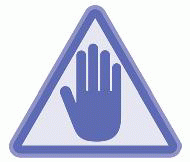 PATIENT SAFETY
PATIENT SAFETY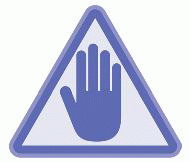 PATIENT SAFETY
PATIENT SAFETY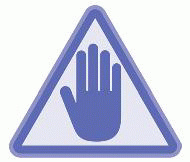 PATIENT SAFETY
PATIENT SAFETY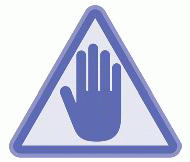 PATIENT SAFETY
PATIENT SAFETY EVIDENCE FOR PRACTICE
EVIDENCE FOR PRACTICE



